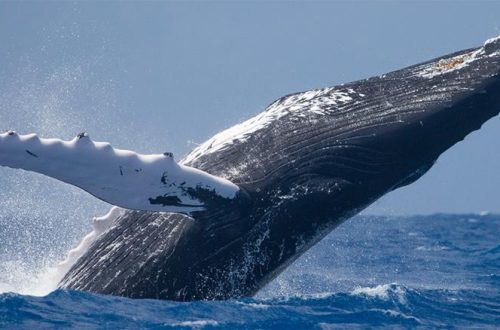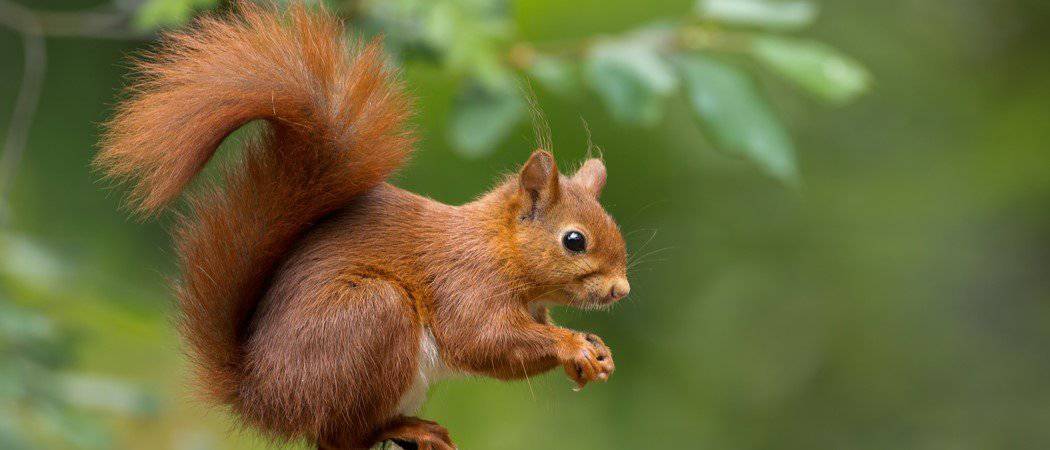
10 interesting facts about squirrels – charming nimble rodents
Squirrels belong to the squirrel family, belong to the genus of rodents. Even a child can recognize this animal: it has an elongated body, a muzzle with ears in the form of a triangle and a huge fluffy tail.
The squirrel’s coat can be of different colors, from brown to red, and the tummy is usually light, but in winter it becomes gray. She sheds 2 times a year, in the middle or end of spring, and in autumn.
This is the most common rodent, which can be found almost everywhere except Australia and Antarctica. They prefer evergreen or deciduous forests, but can also live in lowlands and mountains.
They have 1-2 litters, 13 weeks apart. There can be from 3 to 10 cubs in the litter, which weigh only 8 g. They begin to grow fur after 14 days. Their mother feeds them with milk for 40-50 days, and at 8-10 weeks the babies become adults.
If you like these animals, then these 10 most interesting facts about squirrels are worth exploring.
Contents
- 10 About 30 species have been identified
- 9. There are about 50 million years
- 8. In Russia, only the common squirrel is found
- 7. Considered omnivorous
- 6. One animal can build 15 “nests” for itself
- 5. Most of the time is spent in the trees
- 4. nomadic lifestyle
- 3. The tail is a real “rudder”
- 2. Swim well
- 1. In ancient times, their skins acted as money
10 About 30 species have been identified
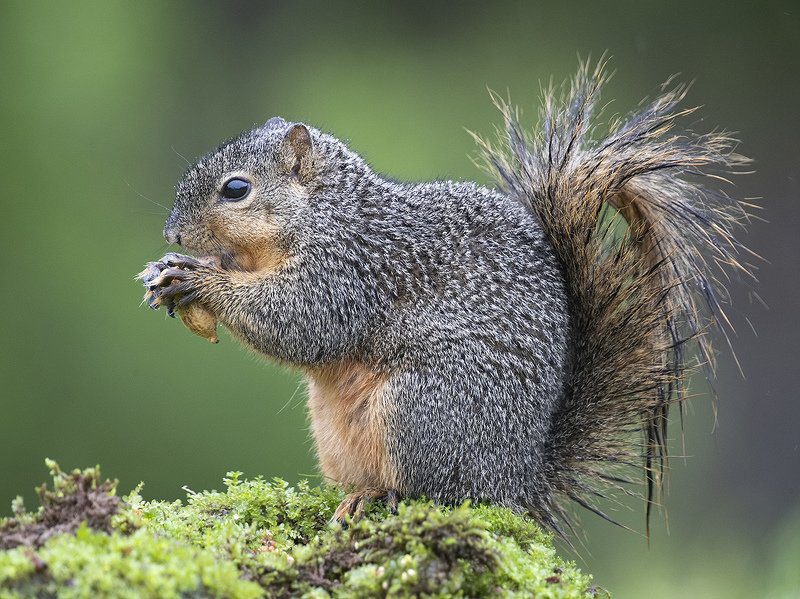 The genus Sciurus includes about 30 species.who live in Asia, America, Europe. But besides these animals, it is customary to call other representatives of the squirrel family, for example, red squirrels, palm squirrels, squirrels. These include Persian, Fire, Yellow-throated, Red-tailed, Japanese and many other squirrels.
The genus Sciurus includes about 30 species.who live in Asia, America, Europe. But besides these animals, it is customary to call other representatives of the squirrel family, for example, red squirrels, palm squirrels, squirrels. These include Persian, Fire, Yellow-throated, Red-tailed, Japanese and many other squirrels.
9. There are about 50 million years
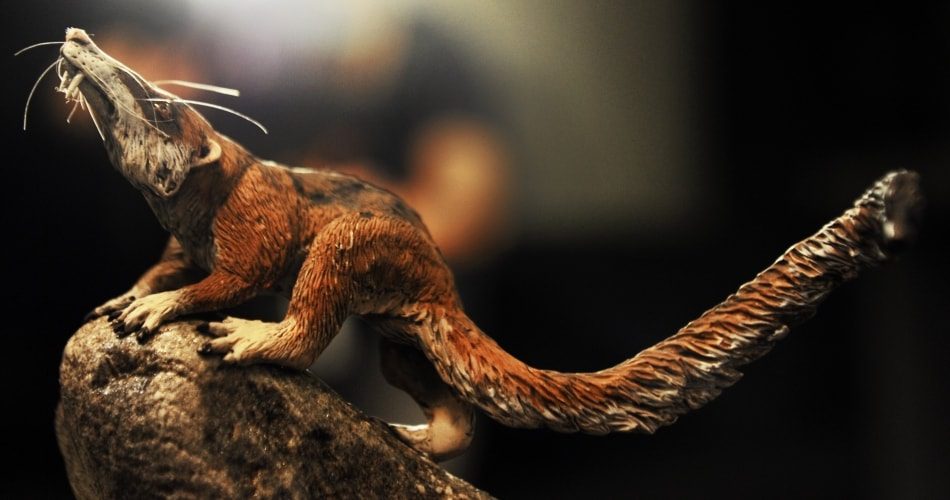 The order of rodents, to which squirrels belong, has about 2 thousand species, its representatives live all over the world. The oldest representative of this order is Acritoparamys, which inhabited North America 70 million years ago. It is the ancestor of all rodents on the planet.
The order of rodents, to which squirrels belong, has about 2 thousand species, its representatives live all over the world. The oldest representative of this order is Acritoparamys, which inhabited North America 70 million years ago. It is the ancestor of all rodents on the planet.
And 50 million years ago, in the Eocene, representatives of the genus Paramys lived, which in their appearance resembled a squirrel. The appearance of these animals was completely restored, they had all the main features of this rodent. But if we talk about the direct ancestor, then these are representatives of the genus Protoscirius, which was formed 40 million years ago. It was then that Iscbyromyides moved into the new family Sciurides, to which the protein belongs.
Protoscirius already had the perfect skeletal structure and middle ear ossicles of modern animals, but so far they had primitive teeth.
8. In Russia, only the common squirrel is found
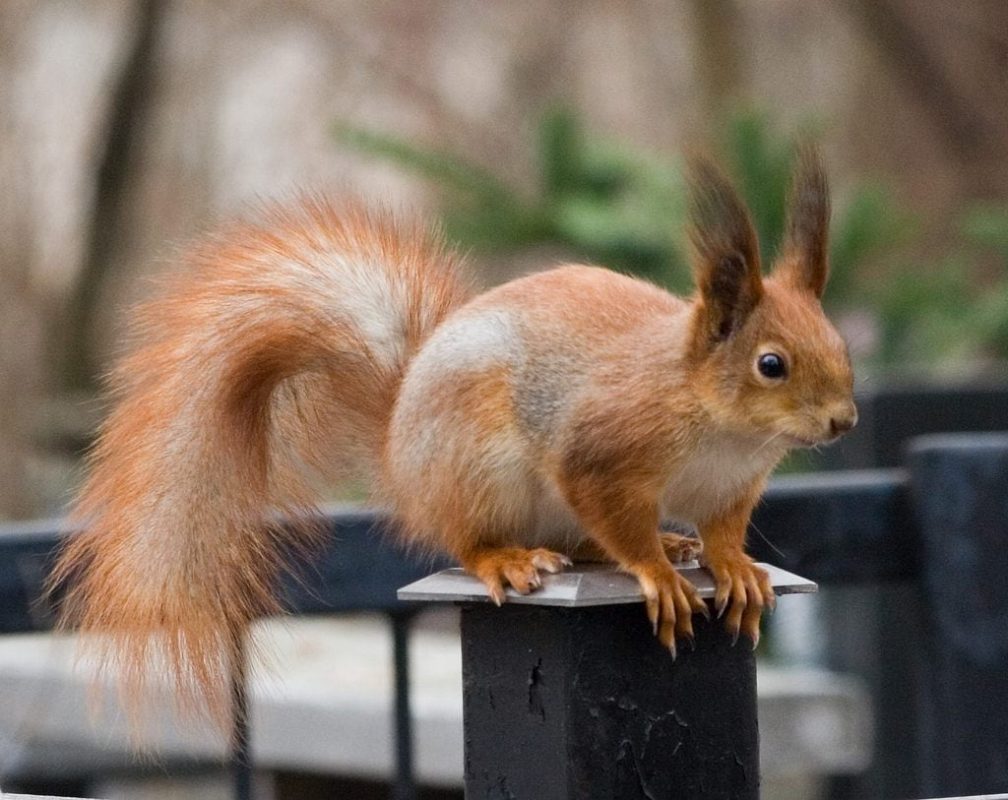 In the fauna of our country there is only an ordinary squirrel. She chooses for life the forests of the European part, as well as the Far East and Siberia, and in 1923 she moved to Kamchatka.
In the fauna of our country there is only an ordinary squirrel. She chooses for life the forests of the European part, as well as the Far East and Siberia, and in 1923 she moved to Kamchatka.
This is a small animal, grows up to 20-28 cm, with a huge tail, weighs less than 0,5 kg (250-340 g). Summer fur is short and sparse, red or brown in color, winter fur is fluffy, tall, gray or black. There are about 40 subspecies of this squirrel. In Russia, you can meet the North European, Central Russian, Teleutka and others.
7. Considered omnivorous
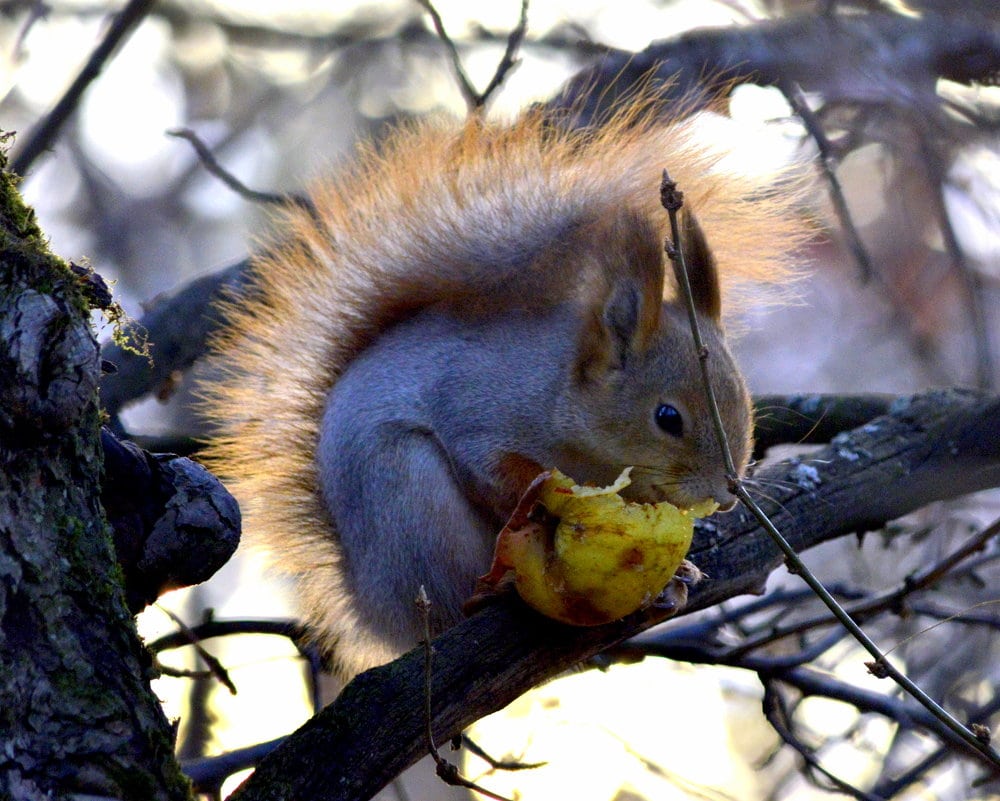 They are omnivorous rodents, can eat different foods, but the main food for them is the seeds of coniferous trees. If they settle in deciduous forests, they eat acorns or hazelnuts.
They are omnivorous rodents, can eat different foods, but the main food for them is the seeds of coniferous trees. If they settle in deciduous forests, they eat acorns or hazelnuts.
They can snack on mushrooms, berries, eat tubers or rhizomes of plants, young branches or buds of trees, various herbs and lichens. They will not refuse fruits that ripen in the forest. In total, they eat up to 130 different types of feed.
If the year turned out to be lean, they may migrate to other forests, for many kilometers, or switch to other food. They eat both insects and their larvae, they can eat eggs or chicks.
For the winter, these smart animals store food. They bury it among the roots or in a hollow, dry mushrooms on the branches of trees. Often, squirrels cannot remember where their supplies are; in winter they can find them by accident if birds or other rodents have not eaten them before.
6. One animal can build 15 “nests” for itself
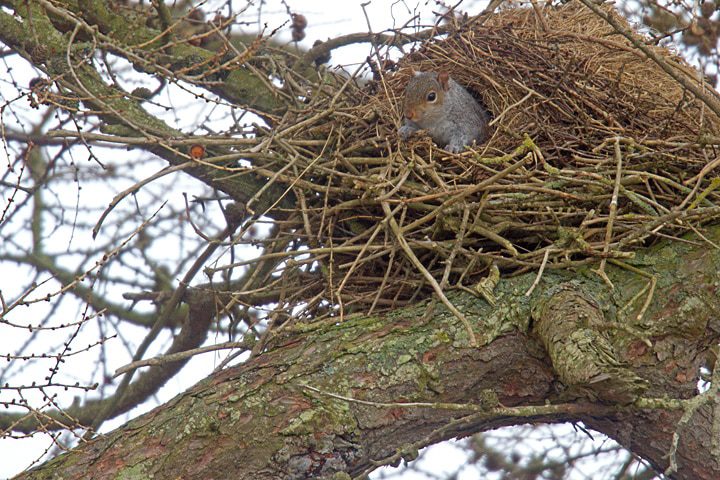 Squirrels prefer to live in trees. Naturally, they also settle on trees. In deciduous forests, hollows are chosen for themselves. Squirrels that settle in coniferous forests prefer to build gaina. These are nests in the form of balls made from dry branches. Inside they are lined with soft material.
Squirrels prefer to live in trees. Naturally, they also settle on trees. In deciduous forests, hollows are chosen for themselves. Squirrels that settle in coniferous forests prefer to build gaina. These are nests in the form of balls made from dry branches. Inside they are lined with soft material.
Males never build nests, but prefer to occupy the nest of the female or settle in the empty dwelling of birds. The squirrel never lives in the same nest for a long time, changing it every 2-3 days. Most likely, this is necessary to escape from parasites. That’s why one nest is not enough for her, she has several, up to 15 pieces.
The female usually transfers the cubs from one nest to another in her teeth. In winter, up to 3-6 squirrels can gather in the nest, although they usually prefer loneliness.
In the cold season, it leaves the nest only for the sake of searching for food. If severe frosts begin, bad weather, prefers to spend this time in the nest, falling into a half-asleep state.
5. Most of the time is spent in the trees
 Squirrels prefer to stay alone. They spend most of their lives in trees, jumping from one to another.. In length, she can cover a distance of up to several meters, which is a lot, given the size of her body. Down she can jump over long distances, up to 15 m.
Squirrels prefer to stay alone. They spend most of their lives in trees, jumping from one to another.. In length, she can cover a distance of up to several meters, which is a lot, given the size of her body. Down she can jump over long distances, up to 15 m.
Occasionally it can descend to the ground, for food or stocks made, it also moves along it in jumps up to 1 m long. It descends from trees in summer, and prefers not to do this in winter.
The squirrel is able to instantly climb trees, clinging to the bark of trees with sharp claws. She can fly up to the very top of her head like an arrow, moving in a spiral.
4. nomadic lifestyle
 Even in ancient chronicles it was mentioned that proteins can migrate. These mass migrations were caused by forest fires or drought, but most often by crop failures. These migrations begin in late summer or early autumn.
Even in ancient chronicles it was mentioned that proteins can migrate. These mass migrations were caused by forest fires or drought, but most often by crop failures. These migrations begin in late summer or early autumn.
Rodents rarely moved far, chose the nearest forest for life. But there were cases when they moved to 250-300 km.
Squirrels roam alone, without forming flocks or clusters, if a natural obstacle does not come across along the way. Many of them during such migrations die of cold and hunger, fall into the clutches of predators.
In addition to mass migrations, there are seasonal ones as well. Forage in the forests ripens sequentially, proteins follow this. Also, at the end of summer – beginning of autumn, young growth begins to settle, which goes to considerable distances from the nest (70-350 km).
3. The tail is a real “rudder”
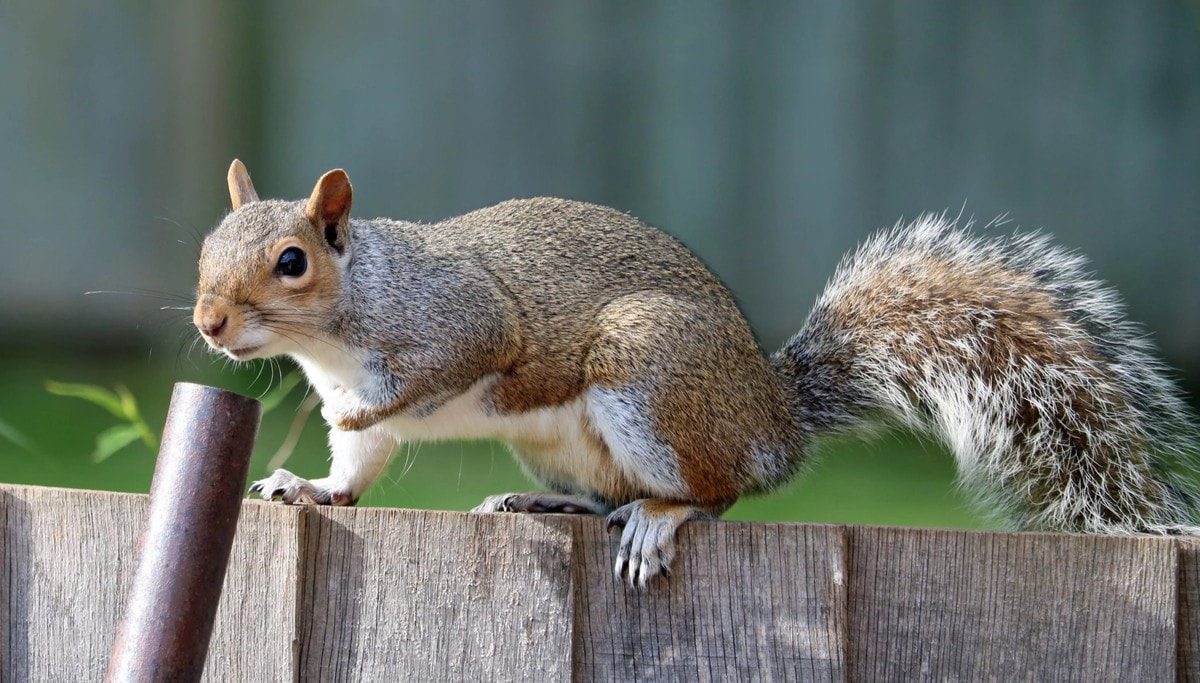 The squirrel’s tail is equal in length to the main part of its body, it is very long, fluffy and thick. She needs it, because. acts as a rudder when she jumps from branch to branch, and also acts as a parachute when she accidentally falls. With it, she can balance and move confidently on the very top of the tree. If the squirrel decides to rest or eat, it becomes a counterweight.
The squirrel’s tail is equal in length to the main part of its body, it is very long, fluffy and thick. She needs it, because. acts as a rudder when she jumps from branch to branch, and also acts as a parachute when she accidentally falls. With it, she can balance and move confidently on the very top of the tree. If the squirrel decides to rest or eat, it becomes a counterweight.
2. Swim well
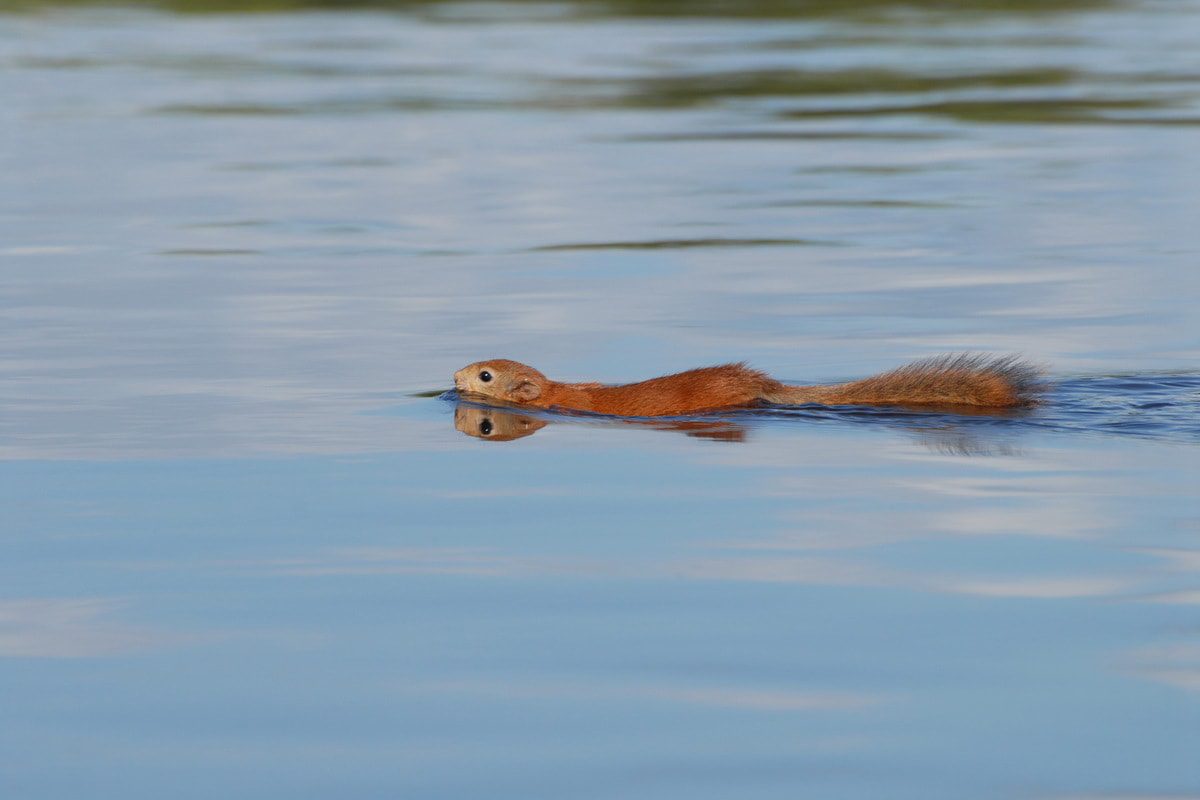 Squirrels can swim, although they prefer not to.. But if such a need arises, for example, a flood or a fire begins, they rush into the water and swim, trying to reach the shore. Crossing the rivers, squirrels gather in flocks, raise their tails and overcome the water barriers that have arisen. Some of them drown, the rest make it to shore safely.
Squirrels can swim, although they prefer not to.. But if such a need arises, for example, a flood or a fire begins, they rush into the water and swim, trying to reach the shore. Crossing the rivers, squirrels gather in flocks, raise their tails and overcome the water barriers that have arisen. Some of them drown, the rest make it to shore safely.
1. In ancient times, their skins acted as money
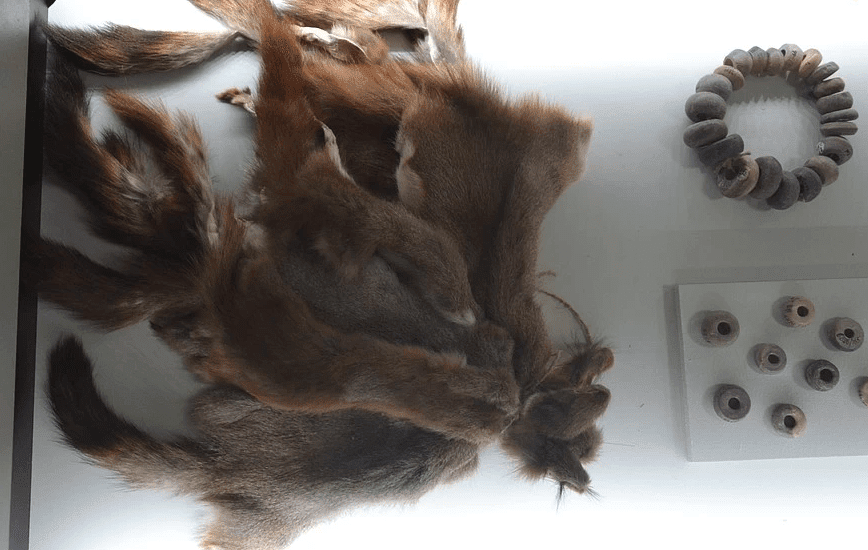 The squirrel has always been considered a valuable fur-bearing animal. Often hunters who hunted in the taiga of the Urals, Siberia, hunted for it. The ancient Slavs were engaged in agriculture, hunting, and also trade. Our ancestors sold furs, wax, honey, hemp. The most popular goods were used as money, most often the skins of squirrels, sable. Furs were paid taxes, tribute, concluded mutually beneficial deals.
The squirrel has always been considered a valuable fur-bearing animal. Often hunters who hunted in the taiga of the Urals, Siberia, hunted for it. The ancient Slavs were engaged in agriculture, hunting, and also trade. Our ancestors sold furs, wax, honey, hemp. The most popular goods were used as money, most often the skins of squirrels, sable. Furs were paid taxes, tribute, concluded mutually beneficial deals.



